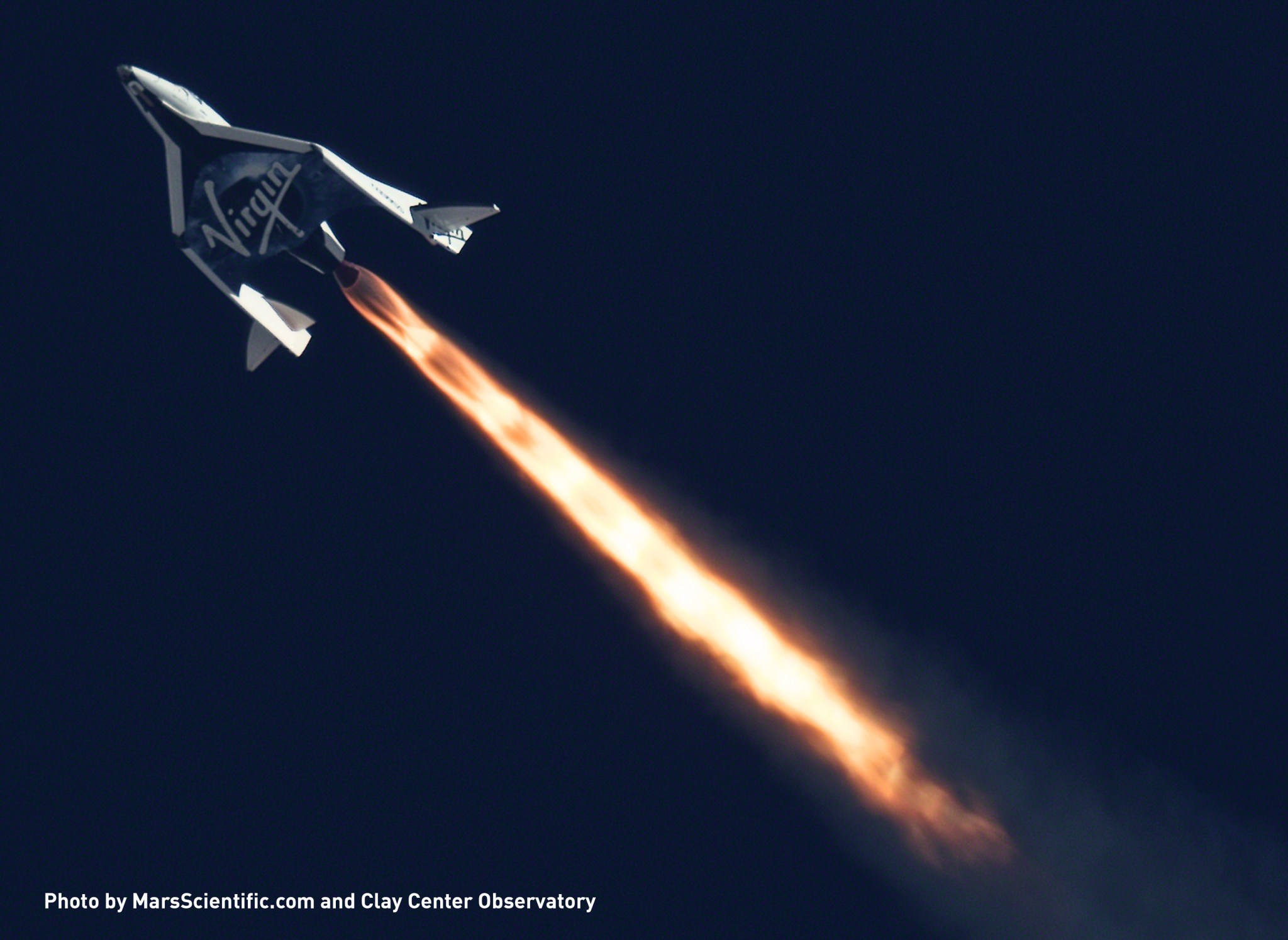NASA has selected 12 technology experiments to fly on the first commercial research flight on Virgin Galactic’s SpaceShipTwo.
Through NASA’s Flight Opportunities Program within the agency’s Space Technology Mission Directorate, officials have been working with commercial companies, universities and government organizations to coordinate testing of innovative space technologies on research flights through the use of commercial suborbital flight platforms.

“Regular, commercial access to space will change how we approach technology development by allowing us to invest in early research validation,” said Christopher Baker of NASA’s Armstrong Flight Research Center. “The payloads on this flight represent a cross section of promising space exploration technologies that could benefit future NASA missions.”
“Virgin Galactic is thrilled to be working with NASA and researchers at such a range of prestigious institutions, and we look forward to flying these research payloads into space,” said Virgin Galactic CEO George Whitesides. “Our team is working hard to increase access to the space frontier so that many more payloads and people have a chance to experience spaceflight directly.”
The technology payloads scheduled for testing on the first SpaceShipTwo research flight include eight from academic and research institutions:
- The On-Orbit Propellant Storage Stability investigation by Embry-Riddle Aeronautical University, Daytona Beach, Florida, continues a microgravity research program to determine stability data for a prototype orbiting fuel depot that could enable future long duration space missions.
- The Electromagnetic Field Measurements payload from John Hopkins University Applied Physics Laboratory, Laurel, Maryland, will characterize the electromagnetic field environment inside the spacecraft. This payload will serve as an integration platform for scientific research and instrument development while providing insight into interference from the spacecraft.
- The Collisions Into Dust Experiment from the University of Central Florida, Orlando, will fire an impactor into simulated regolith to observe the subsequent behavior of the fine particles ejected in microgravity. The knowledge of this behavior can help in understanding future operations on asteroids or low gravity moons for scientific study or resource collection.
- The Validating Telemetric Imaging Hardware for Crew-Assisted and Crew-Autonomous Biological Imaging project from the University of Florida, Gainesville, will test biological fluorescent imaging instrumentation for suborbital applications. Fluorescent protein-based, gene-expression techniques allow direct observation of how biological entities react to the stresses of spaceflight.
- The Variable Radiator demonstration from Texas A&M University, College Station, partnering with Advanced Cooling Technologies and Jet Learning Laboratory, will test a modulating fluid-based spacecraft thermal energy rejection solution. Fluids behave differently in microgravity; understanding that behavior is critical to the operation of spacecraft radiators and other systems that transfer fluids.
- A Micro Satellite Attitude Control System from the State University of New York, Buffalo, will test the application of a carpal wrist joint to the momentum management and control of small satellites. Use of the wrist joint to articulate a reaction-control gyroscope should enable precision pointing of a small satellite on multiple axes.
- The Saturated Fluid Pistonless Pump Technology Demonstrator from the University of Colorado, Boulder, is a cryogenic fuel pump system developed by Flometrics, Inc, which can pump fuel without turbo machinery. This potential advancement for in-space and rocket propellant propulsion would reduce the weight, complexity and cost of spacecraft fuel systems.
- The Automatic Dependent Surveillance-Broadcast (ADS-B) transmitter is an experimental payload sponsored by the Federal Aviation Administration (FAA) Office of Commercial Space Transportation and based on aviation equipment designed by MITRE Corp. and modified by Embry-Riddle Aeronautical University, Daytona Beach, Florida. ADS-B technology will enable integration of suborbital reusable launch vehicles and stratospheric balloons into the FAA’s next-generation air traffic control system.
Two industry-developed technology payloads were also selected for testing on the research flight:
- Made in Space, Inc., Moffett Field, California, has designed an advanced manufacturing experiment intended to feed the development of future 3D printers customized for use in space.
- Controlled Dynamics, Inc., Huntington Beach, California, has built a Facility for Microgravity Research and Submicroradian Stabilization that is a prototype system using active vibration suppression to increase the quality of microgravity experienced by an attached payload.
The first SpaceShipTwo research flight will also provide an opportunity to fly two payloads from NASA centers:
- Ames Research Center’s Suborbital Flight Environment Monitor is a suite of sensors designed to measure the flight accelerations and microgravity quality achieved.
- Johnson Space Center’s Microgravity Multi-Phase Flow Experiment for Suborbital Testing will assess the sustained microgravity operation of a two-phase flow system with a passive gas and liquid separator. This technology is applicable to a number of space applications including water purification.
The Flight Opportunities Program is managed at NASA’s Armstrong Flight Research Center at Edwards, California. NASA’s Ames Research Center in Moffett Field, California, manages the solicitation and selection of technologies to be tested and demonstrated on commercial flight vehicles. For more information on the Flight Opportunities program, visit:
http://flightopportunities.nasa.gov
NASA’s Space Technology Mission Directorate is innovating, developing, testing, and flying hardware for use in NASA’s future missions. Over the next 18 months, NASA’s Space Technology Mission Directorate will make significant new investments that address several high priority challenges for achieving safe and affordable deep-space exploration. For more information about NASA’s investment in space technology, visit:
https://www.nasa.gov/spacetech
Leslie Williams
Armstrong Flight Research Center, Edwards, Calif.
661-276-3893
leslie.a.williams@nasa.gov
Rachel Hoover
Ames Research Center, Moffett Field, Calif.
650-604-4789
rachel.hoover@nasa.gov
David E. Steitz
Headquarters, Washington
202-358-1730
david.steitz@nasa.gov
Virgin Galactic Press Office
VirginGalacticPress@edelman.com
(212) 819-4870



























